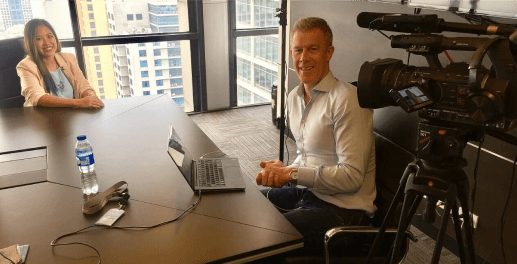Why AEC leaders are turning to the Philippines for remote drafting and design

The architecture, engineering, and construction (AEC) sector is undergoing a drastic workforce transformation. Persistent talent shortages and high turnover rates have put growth at risk: in a 2023 survey, 96% of U.S. engineering and architecture leaders reported that staffing gaps will restrain their company’s growth.
At the same time, more than half of AEC professionals say they still feel the “Great Resignation” pressures, and 55% would consider leaving their current employer for a new opportunity.
Burnout and dissatisfaction are rife, and many younger engineers and architects now value flexibility highly – one industry study found 30% of those considering a job change cite greater flexibility as a reason, and quality-of-life was the #1 priority when evaluating new employers.
Faced with thin margins and fierce competition, AEC firms are turning to remote staffing and global talent pools as a strategic solution.
Pandemic acceleration and the remote work shift
The COVID-19 pandemic forced a rapid embrace of remote work across all industries – and AEC was no exception.
After March 2020, most architecture and engineering firms revamped their remote-work policies: a survey by Zweig Group found 72% of AEC firms changed their remote/flexible work options in response to the pandemic.
Advances in cloud collaboration and BIM technology have made remote design and drafting feasible, turning what was once a niche luxury into a mainstream mode of working. Crucially, industry evidence shows that most AEC professionals maintained or even improved productivity while working remotely.
CMG’s survey reported that 86% of engineers and architects saw stable or higher productivity in a remote setting (52% said productivity was unchanged, 34% reported gains).
In practice, remote work has let firms tap a much broader talent pool – they can now recruit skilled architects, engineers, and BIM specialists anywhere in the world, rather than being limited to local markets.
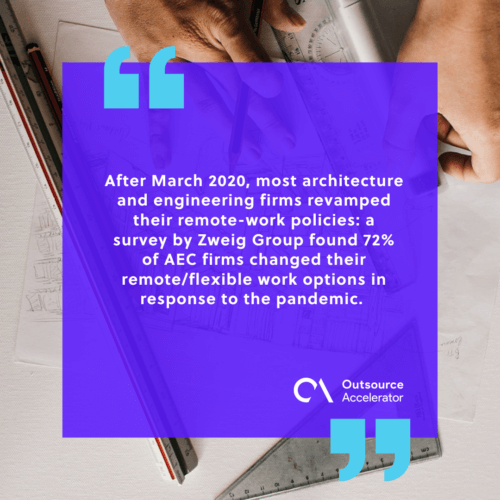
By eliminating geographical constraints, firms can fill critical niche roles (e.g. detailed BIM modeling or structural drafting) by hiring offshore experts, while offering their staff better work–life balance.
Remote staffing can drive dramatic cost efficiencies. Global labor arbitrage means hiring a qualified architect or engineer abroad is far cheaper than paying U.S. market rates.
For example, U.S.-based design architects earn on the order of $108,000 per year on average, whereas equally capable architects in the Philippines make roughly $5,000 annually.
In other words, a firm can hire one senior architect at $108,000/year, or build a remote team of 4–5 skilled professionals in the Philippines for the same cost. These savings go straight to the bottom line.
By offloading routine drafting, takeoff, and documentation tasks to lower-cost teams, U.S. firms reduce overhead on office space and benefits (outsourcing eliminates the need to recruit, equip, and manage a large local staff).
Studies of offshore onboarding show that properly integrated teams often achieve significant productivity gains: companies can see faster time-to-productivity and “significant cost savings” from the equivalent onshore capacity once the first 90 days of setup and training are complete.
Benefits beyond cost: Flexibility and productivity
While cost savings are a strong driver, remote staffing also boosts flexibility, scalability, and quality. Offshore AEC professionals can work around the clock to accelerate project timelines.
In fact, Philippine-based teams often synchronize their schedules to North American business hours – for example, many Filipino engineers start in the evening U.S. time – enabling true 24/7 production cycles.
As one outsourcing firm advertises, Philippine teams deliver “reduced costs, faster turnaround, and round-the-clock production” for U.S. clients. This means design revisions can happen overnight, and client review feedback can be implemented by the next U.S. workday.
At the same time, remote staffing adds manpower headcount instantly: firms can scale up or down capacity quickly for peaks in workload (such as multiple simultaneous projects) without long recruiting lead times or layoffs.
Niche expertise is also easier to procure; for example, offshore teams often include specialists in BIM modeling, MEP detailing, energy analysis, or other fields where U.S. labor is scarce.
By tapping these global teams, firms see improved project throughput and can keep internal senior staff focused on design and client relations rather than routine drafting.
Remote staffing can also aid retention. Many AEC professionals crave the flexibility that remote or hybrid models provide.
Flexible schedules and remote options are now table stakes in other industries, and if AEC firms do not offer them, they risk losing talent. As the 2024 Engineering Management Institute survey noted, a substantial minority of architects and engineers would leave their firms for better flexibility.
By integrating offshore teams, firms can offer current staff more flexible hours (since offshore teams can handle early or late tasks) and reduce burnout.
Moreover, remote staffing often leads to higher worker satisfaction – for example, in one study Filipino remote workers reported higher job satisfaction and better work–life balance than their office-bound counterparts.
Happier remote team members (both offshore and onshore) tend to stay longer and perform better, indirectly benefitting firm morale and client service.
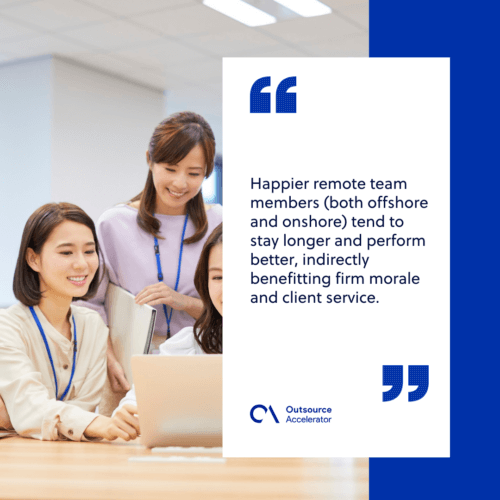
The Philippines: An offshore AEC hub
The Philippines has emerged as a premier source of offshore architectural and engineering talent. The country’s outsourcing (BPO) sector has remained robust: it generated 120,000 new jobs and 1.4% revenue growth even during the pandemic era.
Its large English-speaking population and strong technical education pipeline mean many Filipinos have the CAD, Revit, BIM and engineering skills U.S. firms need.
Importantly, Philippine professionals are accustomed to U.S. business culture and communication styles; many companies note that Filipino staff integrate “seamlessly with [the] in-house team” and function as a “flexible and cost-effective extension of your workforce.”
Because of the geographical proximity and overlapping time zones, collaboration is easier than with distant locations: Philippine teams typically work nights to match U.S. days, so project coordination meetings and handoffs can happen in real time.
This arrangement effectively gives American firms a “second shift” of work – problems and designs get progressed overnight.
Furthermore, the Philippines offers a full suite of AEC support roles. Beyond drafting and modeling, firms can offshore project management, construction detailing, MEP coordination, and even sustainability analysis.
For example, dedicated BIM modeling teams in the Philippines can handle large 3D model assemblies and quantity takeoffs, feeding updated data directly into U.S.-based project schedules.
Specialized software skills are also available offshore: many Philippine AEC workers are certified in Revit, Navisworks, Tekla, AutoCAD, and other industry tools.
Because overhead is lower, firms can afford to maintain a bench of offshore talent who train on a variety of tools and code standards. This global talent integration also accelerates innovation: exposure to new markets and design approaches abroad can inform better design solutions at home.
In practice, a Philippine-based AEC team functions as an extension of the client’s office. One offshore staffing provider emphasizes that its architects and engineers “integrate seamlessly with your in-house team, acting as a flexible and cost-effective extension of your workforce.”
These remote specialists can take on clear-cut deliverables – such as shop drawings, BIM model coordination, or detailing tasks – under your firm’s direction, freeing your senior staff to focus on front-end design and client liaison.
Communication is maintained through regular virtual meetings and shared platforms, so the offshore team learns the firm’s standards and workflows just as an in-house hire would. When the firm uses state-of-the-art collaboration suites (e.g. BIM 360, Asana, or Microsoft Teams), offshore staff can participate fully.
Over time, with proper onboarding, an offshore AEC team attains the productivity of local staff while delivering huge cost advantages.
Tailored AEC services from remote teams
Philippine outsourcing firms typically offer a wide spectrum of services to architecture and engineering companies. These include, for example:
- CAD/Revit drafting and 3D modeling. Detailed production drawings and BIM models created under your specification.
- Shop Drawings and Detailing. Mechanical, electrical, plumbing and structural shop drawings for fabrication and construction.
- BIM Coordination and Modeling (LOD 100–500). Comprehensive 3D building models, clash detection and 4D/5D sequencing.
- Quantity Takeoff and Estimation. Accurate material takeoffs and preliminary cost estimates derived from plans or models.
- Structural/MEP Analysis Support. Calculations, load studies, and code compliance checks performed by licensed engineers.
- Drafting Revisions and Redline Support. Fast turnaround on plan revisions and markups in response to change orders or client review.
In short, offshore AEC professionals can handle nearly any task that does not require on-site presence. Their skill sets are tailored by their providers: new hires often train in U.S. building codes (IBC, NEC, etc.) and advanced design software.
By integrating these remote specialists, firms effectively gain an “on-demand” staff pool that scales with project load.
Best practices for success
Outsourcing works best when treated as a long-term partnership rather than a quick fix. Experts advise careful role definition and robust communication from day one.
Firms should document clear deliverables, success metrics, and workflows for the offshore team, just as they would for any new hire.
In practice, structured onboarding pays off: companies with formal integration plans see far faster ramp-up and higher retention than those that merely “hire and hope.”
With proper management, a remote staffing strategy can deliver sustained benefits: after the initial cost of setup, the real ROI compounds as the overseas team takes on more complex, high-value work.
Finally, security and data control are crucial. Reputable providers maintain ISO-grade facilities and secure VPN access for remote AEC software. Intellectual property is protected by contract, while project data is shared via encrypted channels.
Many firms find that with the right protocols (NDAs, permissions, code reviews) the risks of offshore AEC work are low compared to the operational gains.
Building the future AEC workforce
The future AEC workforce will be hybrid and international. U.S. architecture and engineering firms that embrace remote staffing gain access to the world’s top talent, mitigate the severe domestic skills shortage, and markedly reduce overhead.
By positioning offshore teams as extensions of their own staff – skilled in CAD/BIM drafting, estimation, detailing, and more – firms can greatly increase productivity and flexibility. As one industry survey notes, addressing employees’ desire for flexibility and quality-of-life is essential for retaining talent; remote staffing delivers on both.
In the coming years, remote work in architecture and engineering is likely to stay well above pre-pandemic levels, reshaping how projects are delivered.
US AEC leaders who adapt now will be more competitive, able to staff projects efficiently, and ready to grow even amid talent shortages.

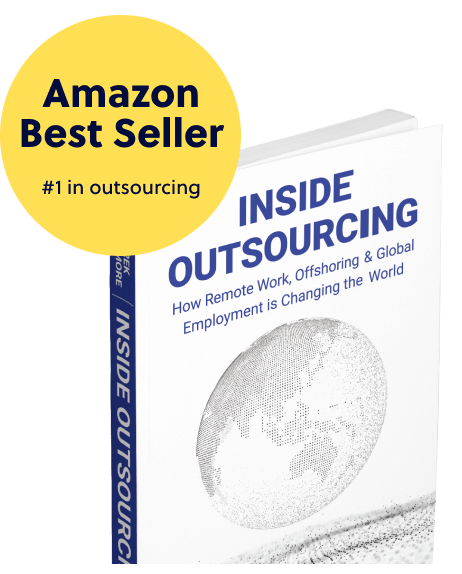

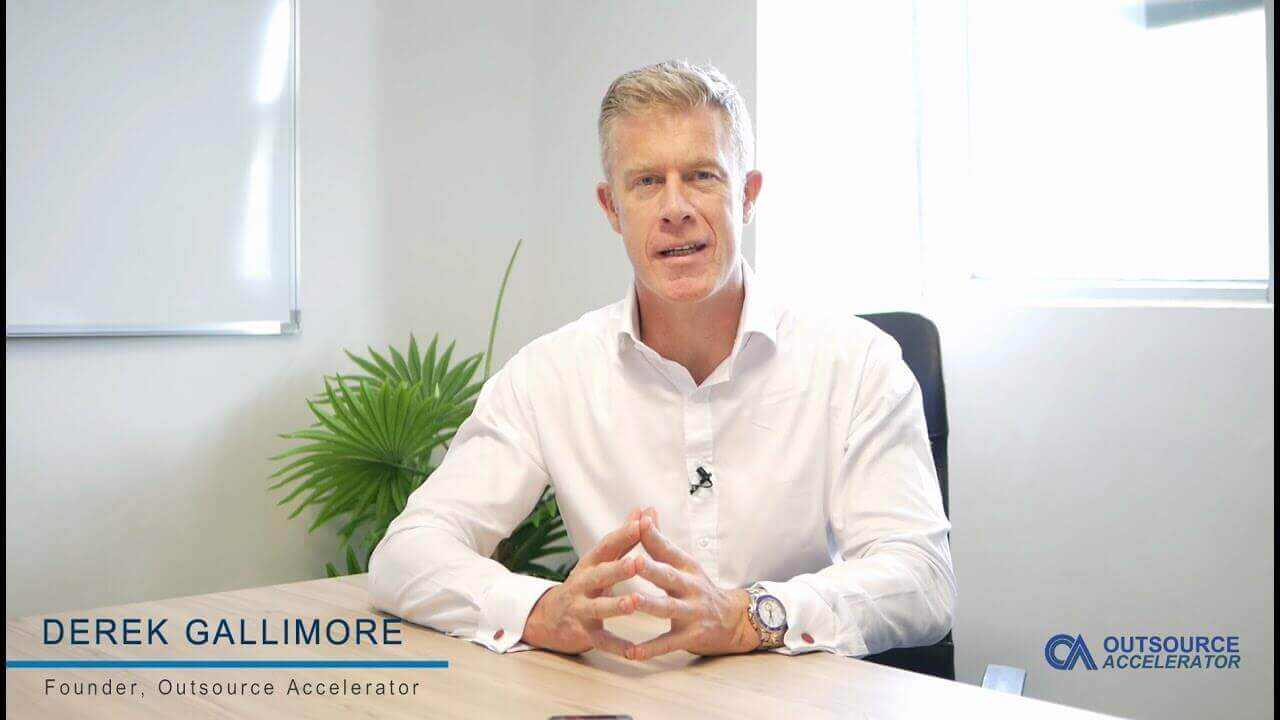

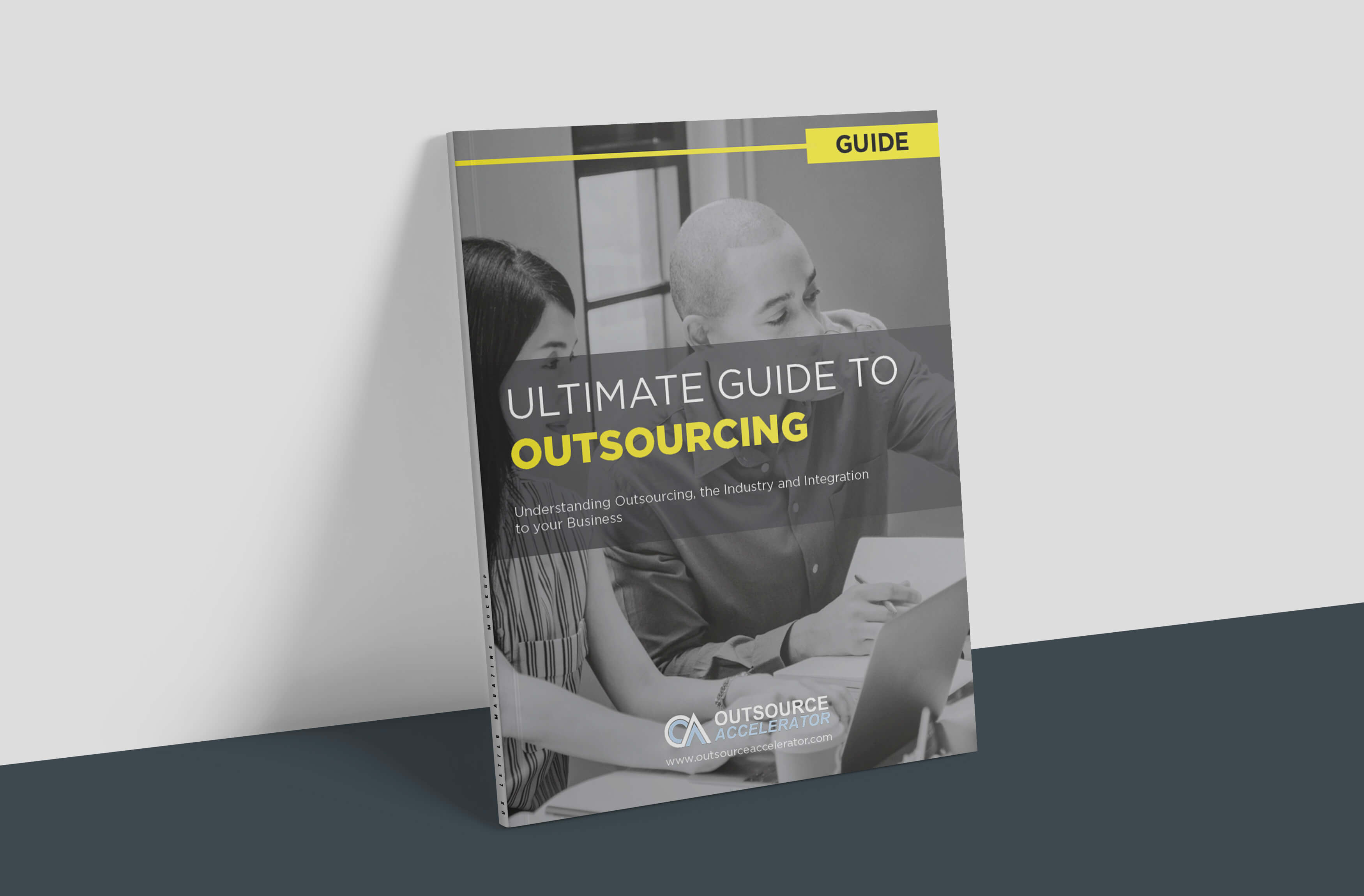
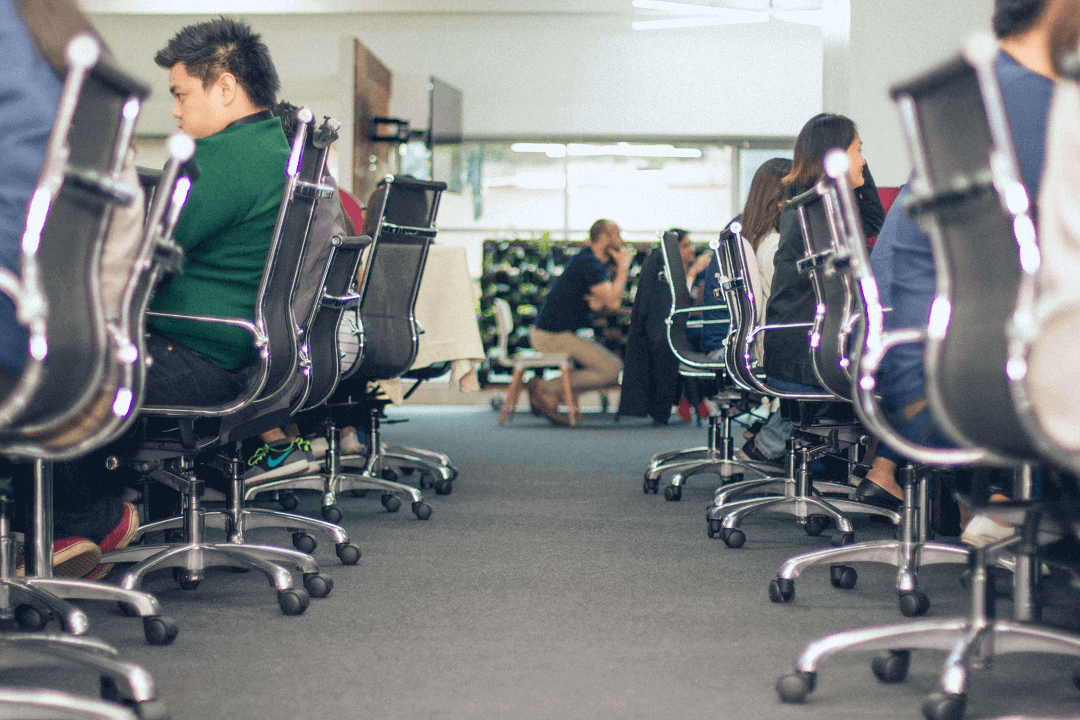
 Independent
Independent

